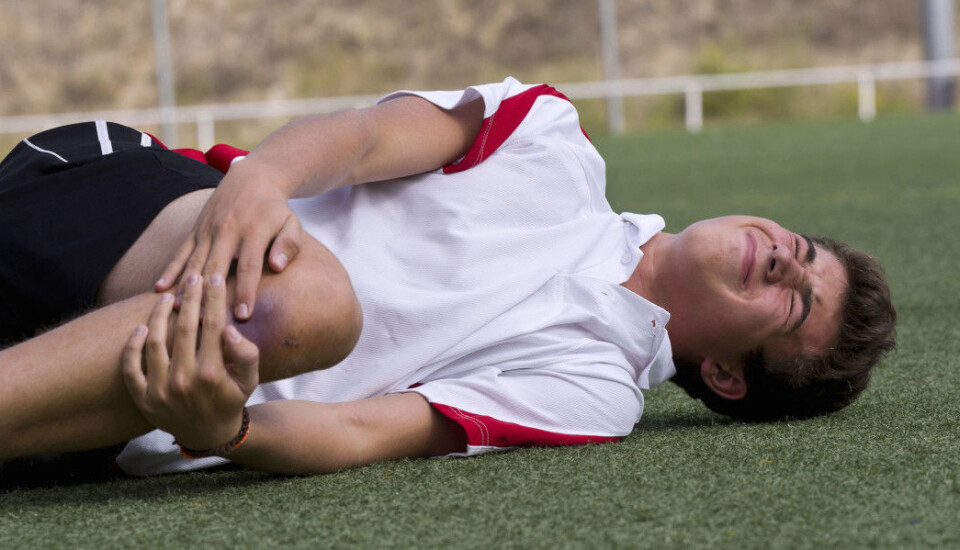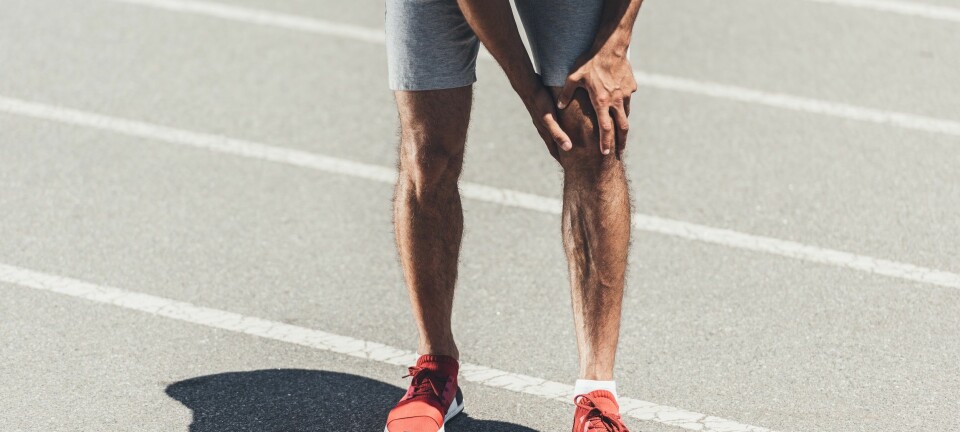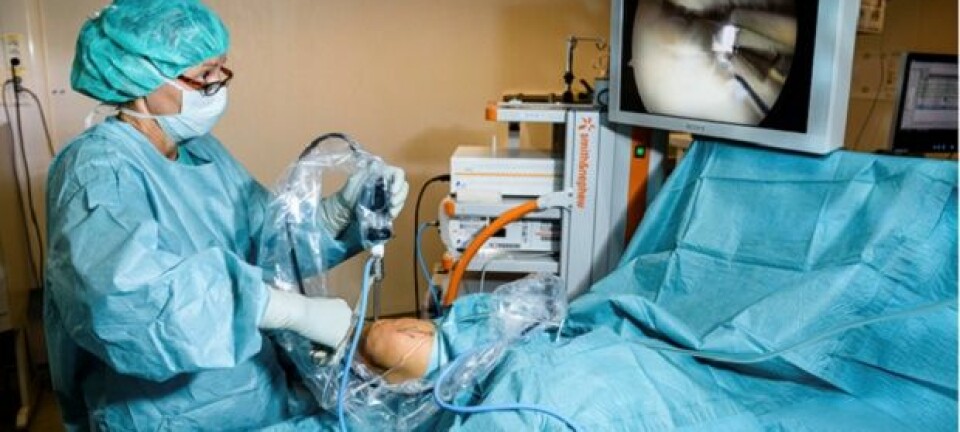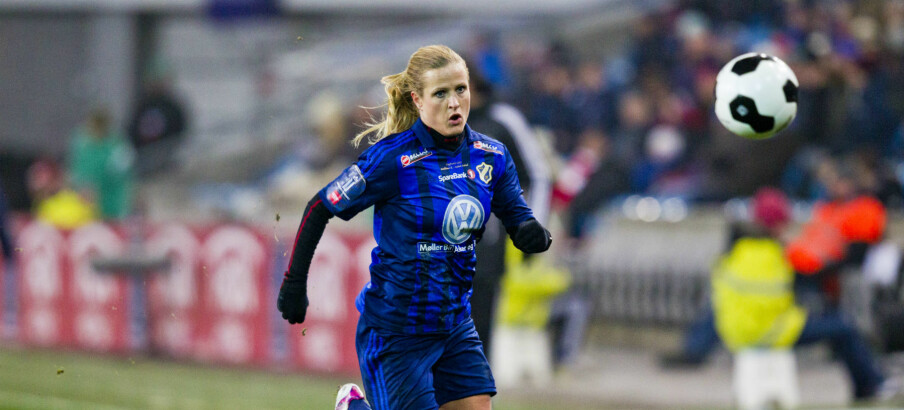
More young people are getting ACL injuries than ever before. But surgery isn’t always the solution.
Research shows that children do just fine without surgery. Treatment without surgery means less risk from the surgery itself, one researcher says.
The cruciate ligaments in your knee play an important role. These are the ligaments that work with the muscles of the knee to keep it stable. Each knee has two cruciate ligaments, one in front and one in the back.
The anterior, or front, cruciate ligament ensures that the tibia and calf do not slide too far forward with respect to the femur and that the knee doesn’t rotate too much. The rear ensures that the calf does not slide backwards.
A cruciate ligament injury means that you have had a rupture or a tear, usually in the anterior cruciate ligament, commonly abbreviated ACL.
“This is a common sports injury, especially in people between the ages of 16 and 39. Every year around 2000 people have surgery for this in Norway,” says Guri Ranum Ekås.
She is a consultant in the knee section of the orthopaedic department at Akershus University Hospital and works as a physician for the Norwegian national ski jumping team. She has also studied cruciate-ligament injuries in children.
Ekås has noticed an unsettling development of late.
"What is worrying is that the injury is increasing most in the youngest patients, who are not fully grown," she said.
In 2008 there were around 90 operations per 100 000 inhabitants in the ages 10-19. In 2018 this figure had increased to 110 operations in the same age group.
However, it is extremely difficult to treat this injury in children who are not fully grown.
Greater risk for children
There are basically two options for treating ACL injuries. Either the patient is given exercises under the guidance of a physical therapist, or the patient is offered surgery.
Surgery involves using a graft to replace the torn ACL. The surgeon usually takes the graft from the ligament that lies between the kneecap and tibia, or the hamstring tendon that sits at the back of the thigh.
“In reality, people who are given exercises instead of surgery may need surgery later, and those who are operated will always have to do exercise for their knee afterwards,” Ekås said.
But treating ACL injuries in children is complicated because they are not fully grown, says Ekås. Children have what is called open growth plates, or epiphyseal disks. These are disks located at the ends of the bones, where bone growth occurs. When children are fully grown, these disks close by turning into bone.
When a child gets an ACL injury and is operated on, these disks are vulnerable to injury. Surgeons have to take this into account, says Ekås.
“Although the risk is not very large, children may have a growth disorder as a result —overgrowth, delayed growth or stopped growth. This can result in different bone lengths between legs or lead to bowed legs or knock knees,” she said.
One in three has a new injury after surgery
There are also other factors that make surgery in children complicated.
“There is more uncertainty about tendon development that replaces the ACL of a child than an adult over time. As the child grows, the new ACL we insert does not appear to become thicker as it grows — it lengthens,” she said.
Ekås also points out that because the knee of a child is, after all, smaller than that of an adult, there’s less room for the surgeon to work in, which can make the surgery more difficult.
But what Ekås thinks is most important to be aware of is that children who undergo this operation are often at greater risk of a new knee injury. Ekås says that as many as one in three who have the surgery either rupture the graft they are given or injure their ACL in the other knee.
“We have seen that a high proportion of children who have surgery have to have another operation. They have a higher chance of injuring the same knee again, either the ACL or the meniscus. They also have a greater risk of injuring the other knee,” she said.
Exercises before surgery
Ekås is in the process of completing a doctorate where she has done a deep dive into ACL injuries in children. She and her colleagues have conducted and published two studies in which they followed 50 children with ACL injuries for a total of nine-and-a-half years.
The researchers looked at the type of treatment study participants received for the injury, why they received the treatment and the outcome. Participants in the study also underwent a series of tests so that the researchers could measure how well their knee functioned and how their recovery developed over time.
Four of the children needed emergency surgery right after their injury, while the rest received exercises from a physical therapist to make the knee more stable. In addition, they used a splint for knee support during training.
After eight years, 24 of 44 of the children who had worked with a physical therapist had to undergo surgery, mostly because the knee was unstable.
Still active despite previous injury
Nevertheless, the vast majority of study participants had good results when it came to knee function tests. Most were still active nine years later, but a good number were not as active as they had been. Two out of three had cut out what are called torsional sports, such as handball, soccer and basketball.
“We asked the patients why they had become less active, and half responded that it was because their knee was not working well enough, they were afraid of getting new injuries or that they did not trust their knee. The rest replied that there were other reasons, such as the team being dissolved or having lost interest,” Ekås said.
Although most people had good results when their knee function was tested, Ekås points out that this was not universal.
“It is important to recall that ‘the majority’ does not mean the same as ‘everyone’. Some patients had poorer results and did worse than others,” she said.
Controversial message
Ekås believes the most important finding in the study is that not everyone needs surgery for an ACL injury.
“At the same time, some children must be operated on early and close to half needed surgery over the next decade. Surgery is thus necessary for some children, but what our study shows is that it is actually possible to do well without surgery. If you can manage without it, you avoid the risk of surgery. We think it is important that the treatment is tailored to the individual rather than everyone being treated the same way,” Ekås said.
Ekås says it’s important to underscore this idea of individualized treatment because it is somewhat controversial. She says in the United States, for example, it is common to offer surgery to all children and adults with this injury. This practice is based on other studies that have shown that patients are at greater risk of meniscal injury if they are operated on later, rather than immediately after the original injury occurred.
But Ekås points out that these studies are problematic because they only compare patients who have had late or early surgery — those who did not get surgery and did well afterwards were not included in the studies.
Why are there more ACL injuries in young people?
Young athletes who participate in handball, football, basketball, alpine skiing or ski jumping are most often at risk of ACL injuries, Ekås says.
And it turns out that girls are also more prone to this injury. According to an article from the Norwegian national newspaper Aftenposten, there has been a clear increase in ACL injuries in Norway, especially among young girls. Children from 10 to 19 years old have seen an increase in the number of operations in girls from 2005 to 2010, and again from 2010 to 2015.
"The proportion of girls who undergo ACL surgery in this age group is twice as high as in boys," Håvard Moksnes told Aftenposten.
Between 2004-2013 almost 1300 girls between the ages 11-16 years underwent surgery for ACL injuries, compared to 478 boys in the same age group.
Moksnes has a doctorate on ACL injuries and is a specialist in sports physiotherapy at Idrettens Helsesenter, Sports Health Centre, in Oslo.
“We have no clear explanation for why there is such a difference, but the same pattern is repeated in ACL registers around the world,” he said in the newspaper article.
Increased awareness in health professionals
Ekås confirms that the reason for the increase in ACL injuries remains unknown. There are probably several reasons for the trend.
“We believe it’s related to the fact that health professionals now have better and more accessible equipment, such as MRI, to diagnose the injury,” she said.
“Health professionals are also more aware of this injury in children. In the past, it was thought that children did not get ACL injuries, a belief that was supported in the textbooks. The perception was instead that the ACL tore off where it was attached to the tibia, but we now know that children get both of these injuries,” she said.
Alpine and twin tip accounted for half of injuries
Ekås' study found that half of the participants tore their ACL after skiing on alpine or twin tip skis.
But that doesn’t mean she would advise young people to stop skiing.
“That would be stretching it a little far. It’s good to be active and many people go skiing. But it’s important that you don’t go straight back to the slopes after an injury, but rather get back into shape gradually,” she said.
It’s not unusual that children come to the doctors after being at a physiotherapist after their second injury.
“If you twist your knee and it swells within twelve hours, this is typical of bleeding inside the knee joint. It suggests that something is damaged in the knee joint and should be checked out. The knee is prone to new injury immediately after a second knee injury,” says Ekås.
ACL injuries affect mental health
In another article from Aftenposten, Professor Lars Engebretsen from the Oslo Sports Trauma Research Center warned people about the mental challenges that can result from an ACL injury.
“Knee surgeons and physiotherapists from Australia, Brazil, Canada, the United States and Europe all talked about the same development, that young people develop mental problems following ACL injuries because not everyone is able to return to their previous activity levels,” Engebretsen told Aftenposten.
In the same article, Marte Pensgaard at Olympiatoppen, a part of the Norwegian Olympic and Paralympic Committee and Confederation of Sports, confirmed that young athletes who injure themselves may struggle with mental health issues in the time after their injury.
She told Aftenposten that the biggest predictor of getting a new injury is that the athlete has already had an injury.
“That tells us that having a new injury as a young person is problematic. It makes it even more important to avoid the first injury,” she said.
Prevention important
Ekås also believes that the most important approach to ACL injuries is to prevent them as much as possible.
“There is good evidence that prevention should be an integral part in children’s sports. Everyone should address this,” she said. She and colleagues were among the researchers who developed a consensus statement for the International Olympic Committee on the prevention, diagnosis and management of ACL injuries in children.
“Exercises to prevent ACL and other injuries should be included as a natural part of warm-up and training in children's sports,” Ekås said.
Reference:
Ekås, G. et al.: Coping With Anterior Cruciate Ligament Injury From Childhood to Maturation: A Prospective Case Series of 44 Patients With Mean 8 Years’ Follow-up. American Journal of Sports Medicine (2018).
———
Read the Norwegian version of this article at forskning.no


































